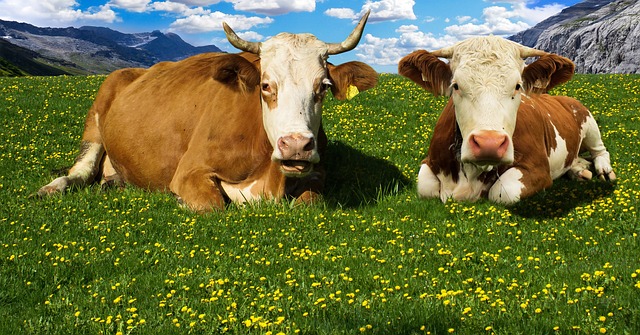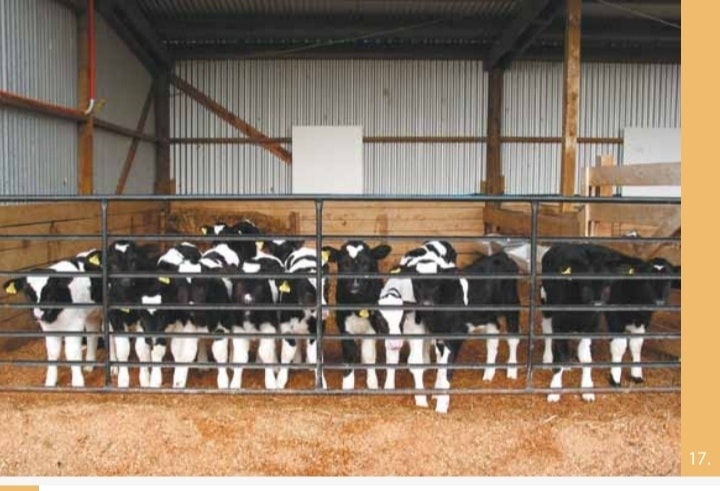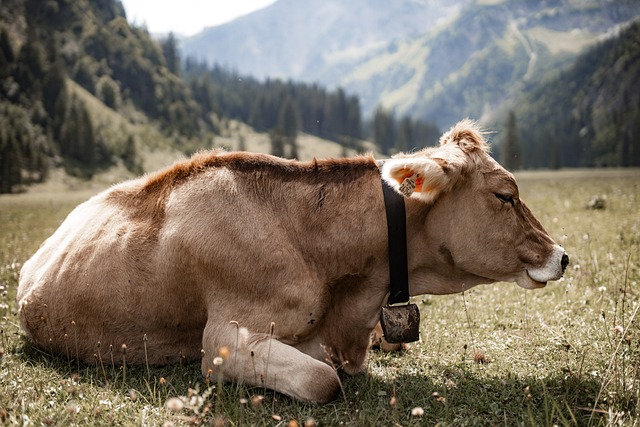Cattle farming requires keen observation and proactive care to ensure the health and well-being of the herd. Recognizing signs of illness in cows is crucial for early intervention and effective treatment. In this article, we will discuss easy steps to identify a sick cow by observing feeding habits, attitude, and specific physical indicators.
1. Feeding Habit:
Eating Behavior: Observe if the cows are actively eating, sorting through their feed, or showing disinterest in feed altogether.
Undisturbed Feed: Check for any feed left undisturbed in front of a cow, as this could indicate a lack of appetite or illness.
Feed Consumption Levels: Compare the feed consumption levels of individual cows. A cow consuming feed at a lower level than its neighbors may be displaying signs of illness.
2. Attitude of the Cows:
Curiosity: Healthy cows are generally curious about their surroundings. If cows show disinterest or lack curiosity when you pass by, it could be a sign of illness.
Ear Movement: Observe whether the cows are moving their ears to listen to the surroundings. Ears in constant motion are a positive sign, while lack of movement may indicate an issue.
3. Condition of Ears and Eyes:
Droopy Ears: Depressed or feverish cows may exhibit droopy ears. This change in posture can be a clear indication of underlying health issues.
Cold Ears: Decreased blood flow to the periphery can result in cold ears. This condition may be associated with milk fever, acidosis, or toxic states.
Sunken Eyes: Sunken eyes are a sign of dehydration and should be promptly addressed.
Common Behaviors of Sick Animals:
Feeding: Off-feed, failure to chew the cud, and vomiting.
Drinking: Unusual water consumption patterns, such as drinking more or less than normal or avoiding water altogether.
Oral Symptoms: Grinding teeth, salivating, and excessive drooling.
Posture and Movement: Staring blankly, staggering, turning in circles, high-stepping gait (associated with heartwater disease), arching the back (a sign of peritonitis), stiffness of the legs, inability to rise, paralysis, or coma.
Common Disease Signs:
Loss of Appetite: Cows not feeding or showing a reduced appetite.
Fever: Elevated body temperature, a common sign of infection.
Fecal Abnormalities: Changes in the consistency or color of feces.
Urinary Abnormalities: Altered color or consistency of urine.
Swollen and Hot Areas: Check for swollen and hot areas on the body, including lymph glands or the udder.
Breathing Rate: Abnormal breathing patterns.
Unusual Smells: Foul or abnormal odors.
Behavioral Changes: Any significant deviation from normal behavior.
Cows’ vital parameter constants
• Temperature: (100.4 (38) – 102.5 (39.17)
• Pulse: 60 – 84 beats/min
• Respiration: 15 – 35 breaths/min
• Rumen contraction: 1- 2 contractions /min
To accurately diagnose the cause of a disease or death in animals, it is imperative to provide fresh samples for examination. Swift sample submission significantly enhances the likelihood of obtaining precise results, enabling veterinarians to implement timely and targeted interventions. Here are the key details to include when submitting samples for examination:
- Contact Information:
Please provide your complete address and a mobile number where you can be reached for any follow-up inquiries.
2. Animal Details:
Clearly specify the type and age of the affected animal (e.g., adult cow) to aid in narrowing down potential causes.
3. Number of Affected Animals:
Indicate the total number of animals exhibiting signs of illness to assess the scope and severity of the situation.
4. Detailed Disease History:
Furnish a comprehensive history of observed disease signs, including specific symptoms such as diarrhea, swollen udder, reluctance to feed, inability to stand, or any abnormal behavior. Thorough documentation assists in establishing patterns and identifying potential sources of contagion.
5. Duration of Illness:
Mention the timeframe since the onset of illness in the animal(s). This information helps in understanding the progression of the disease and can influence diagnostic considerations.
Importance of Postmortem Examination in Cows:
In cases of unexplained deaths or severe illnesses, performing a postmortem examination on a cow is invaluable. This procedure involves a detailed examination of the animal’s body after death and can provide critical insights into the cause of disease or death. The benefits of a postmortem examination include:
Accurate Diagnosis:
Postmortem examinations offer a direct examination of tissues and organs, allowing for a more accurate diagnosis of diseases that may not be evident through clinical signs alone.
Identification of Hidden Conditions:
Some diseases may not manifest externally, making them challenging to diagnose during the animal’s lifetime. Postmortem examinations unveil hidden conditions, contributing to a more comprehensive understanding.
Disease Surveillance:
The data gathered from postmortem examinations contribute to disease surveillance efforts, aiding in the early detection and control of infectious diseases within the herd.
Preventive Measures:
Understanding the specific cause of disease or death enables farmers to implement targeted preventive measures, reducing the risk of further outbreaks and safeguarding the overall health of the herd.
Conclusion
By paying close attention to these easy steps and indicators, farmers can promptly identify and address health issues in their cattle, ensuring a healthier and more productive herd. Regular monitoring and timely intervention play a crucial role in maintaining the overall well-being of the cows and the success of the farm.





